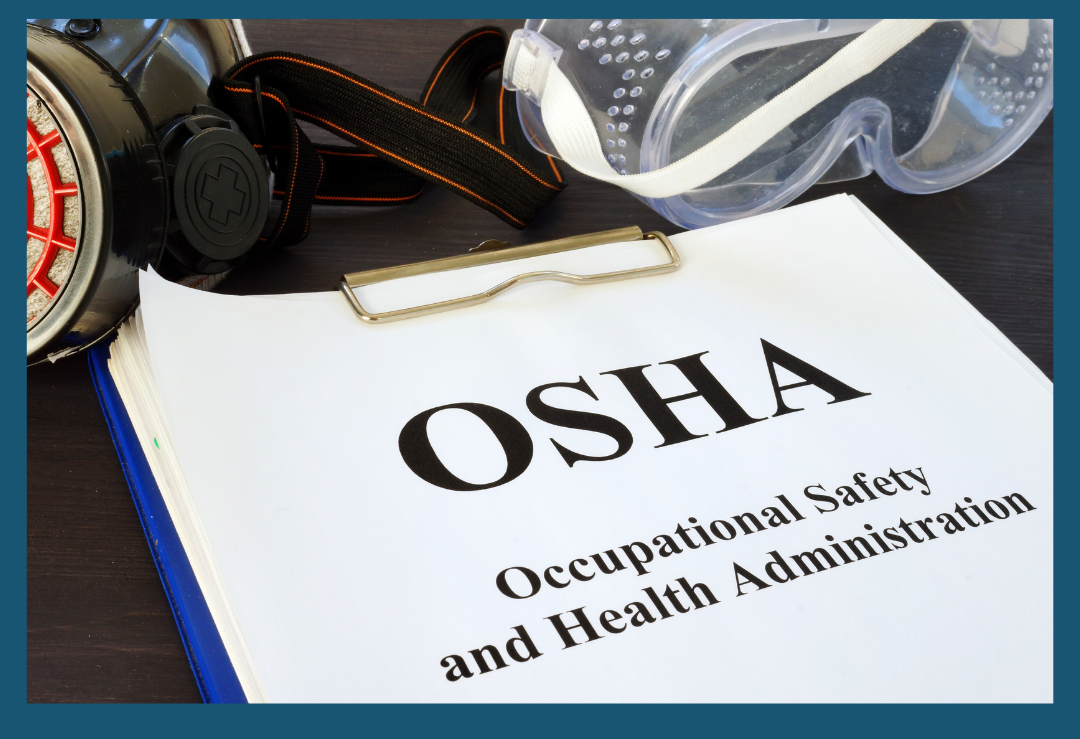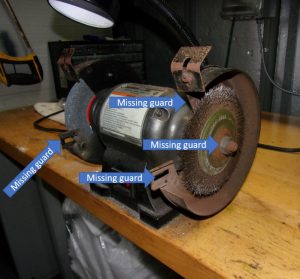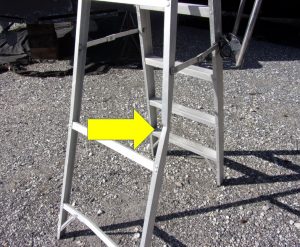
OSHA’s Top 10 Most Commonly Cited Safety Violations
Published on March 22, 2021Editor’s Note: The Marina & Boatyard Safety column in the May/June 2021 issue of Marina Dock Age will review the remaining five OSHA citations.
As many prepare for the 2021 Boating Season, now is a great time to review the most common Occupational Safety and Health Administration (OSHA) citations. A quick review of the list and one will see that each of the top citations can likely be found in a marina or boatyard. In this column, we will review in countdown format the citations beginning with #10 and concluding with #6.
At the time of this writing, OSHA missed the March 15 deadline regarding the announcement of a National Emergency Temporary Standard for COVID-19. However, on March 12, OSHA did issue a National Emphasis Program (NEP) for COVID-19. It is possible the NEP will lead to more facility inspections so this review of the top 10 may help a marina avoid a citation.
#10- Eye and Face Protection
This is a common violation with a relatively simple fix. Citations related to eye and face protection generally involve employees not wearing protection when working with machinery or handling chemicals or other items that may splash onto the face area. Machinery may include items such as bench grinders, table saws, power washers, or lawn equipment. With machinery, eye protection is meant to protect from flying particles, dust, or other debris. Employees should wear eye protection when using chemicals, transferring chemicals, or tasks such as pumping fuel or pump outs.
#9 Machinery and Machine Guarding

Citations related to machinery and machine guarding very often involve a safety guard that has been removed. For example, a table saw or bench grinder without a guard. It is very common to remove a guard to change an abrasive wheel on a grinder and the guard is not reinstalled. Another citation in this category deals with equipment that is not properly anchored. As an example, a bench grinder or drill press that is not bolted securely to a workbench or table.
#8 Fall Protection Training Requirements.
This citation occurs when employers fail to provide the proper fall protection training to employees. Any employee required to use fall protection should be properly trained on when and how to use fall protection equipment, which type of equipment to use, proper anchor points, methods to calculate clearance distances, and how to initiate a rescue plan. Employers do have a duty to provide training upon initial assignment meaning a new employee or employee new to the task requiring fall protection. While there is not a requirement for annual training or a set interval specified for retraining, employers are responsible to ensure the effectiveness of fall protection over time.
#7 Powered Industrial Trucks.
According to the Industrial Truck Association, approximately one in 10 forklift operators will be involved in an accident. Nationally, a workplace fatality involving a forklift happens every five days. The OSHA standards for Powered Industrial Trucks (PIT) requires training immediately upon hire, installation of new equipment, after an accident or near miss, or when an employee is observed operating in an unsafe manner. The standard also defines a requirement for refresher training every three years. An employee may have many years of industry experience, but once hired for a position at a new marina would still require operator training and certification. A Travelift is considered a Mobile Gantry Crane not a PIT but OSHA did issue a Letter of Interpretation stating training on Travelifts should follow the PIT Standard.
Other citations under this standard may include unapproved modifications to the lift, failure to wear seatbelt, working or standing under load, or failure to complete daily equipment inspections.
#6 Ladders

Citations involving ladders generally fall into two categories: improperly sized or poor condition. In terms of sizing, the standard requires the ladder to extend 36 inches above an elevated work surface or landing. With stepladders, the top two steps are never meant for working or standing. In addition, employees should inspect ladders before use and ladders with visible signs of damage should be removed from service.
In Conclusion
As of January 15th of this year, the penalties for OSHA citations increased. A serious or other-than serious citation can carry a penalty up to $13,653 per violation. A Willful or Repeat citation carries a penalty of up to $136, 532 per violation. A quick review of the workplace related to the citations noted above will make the workplace safer and may prevent an accident or injury.
| Categories | |
| Tags |




